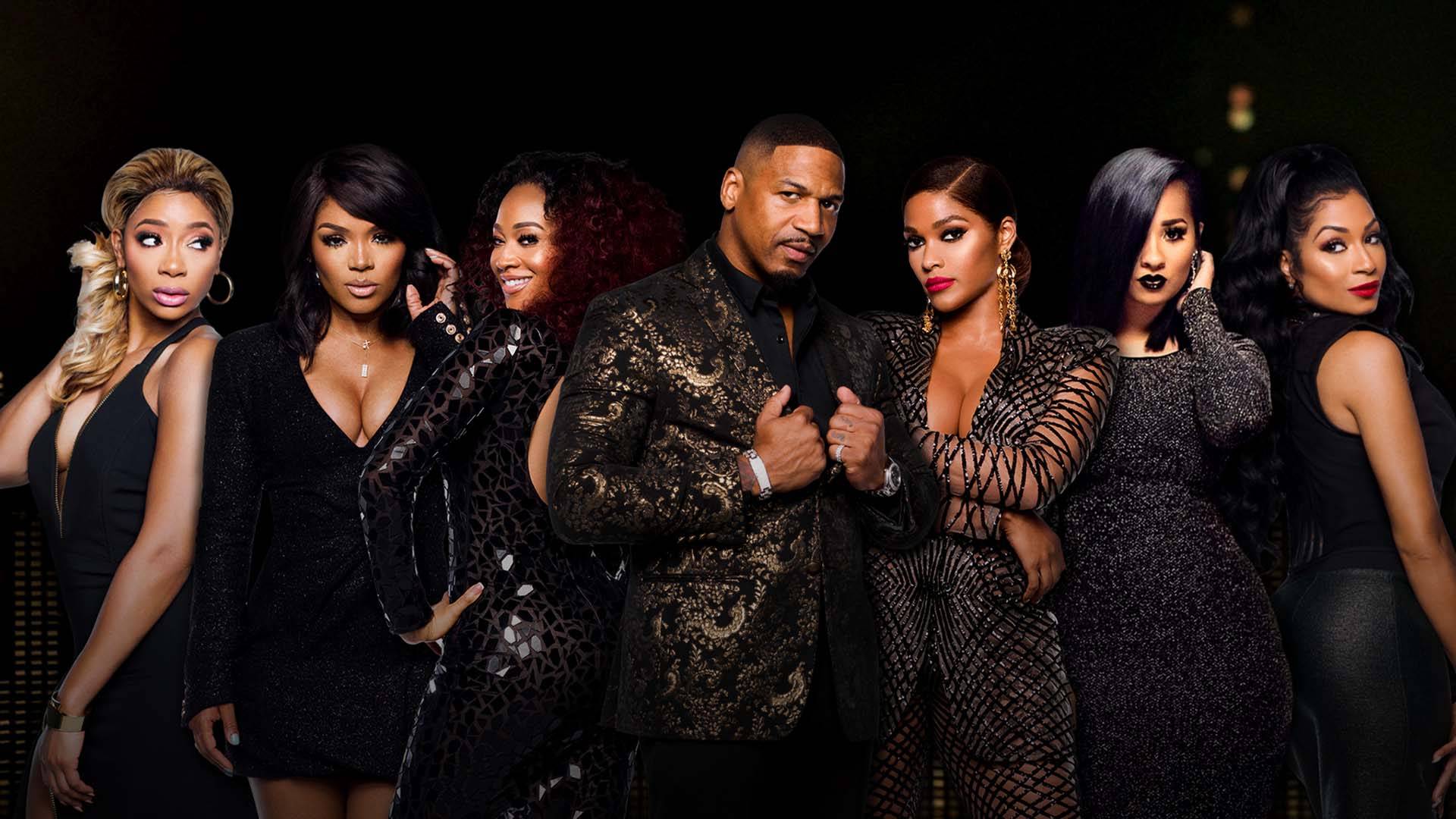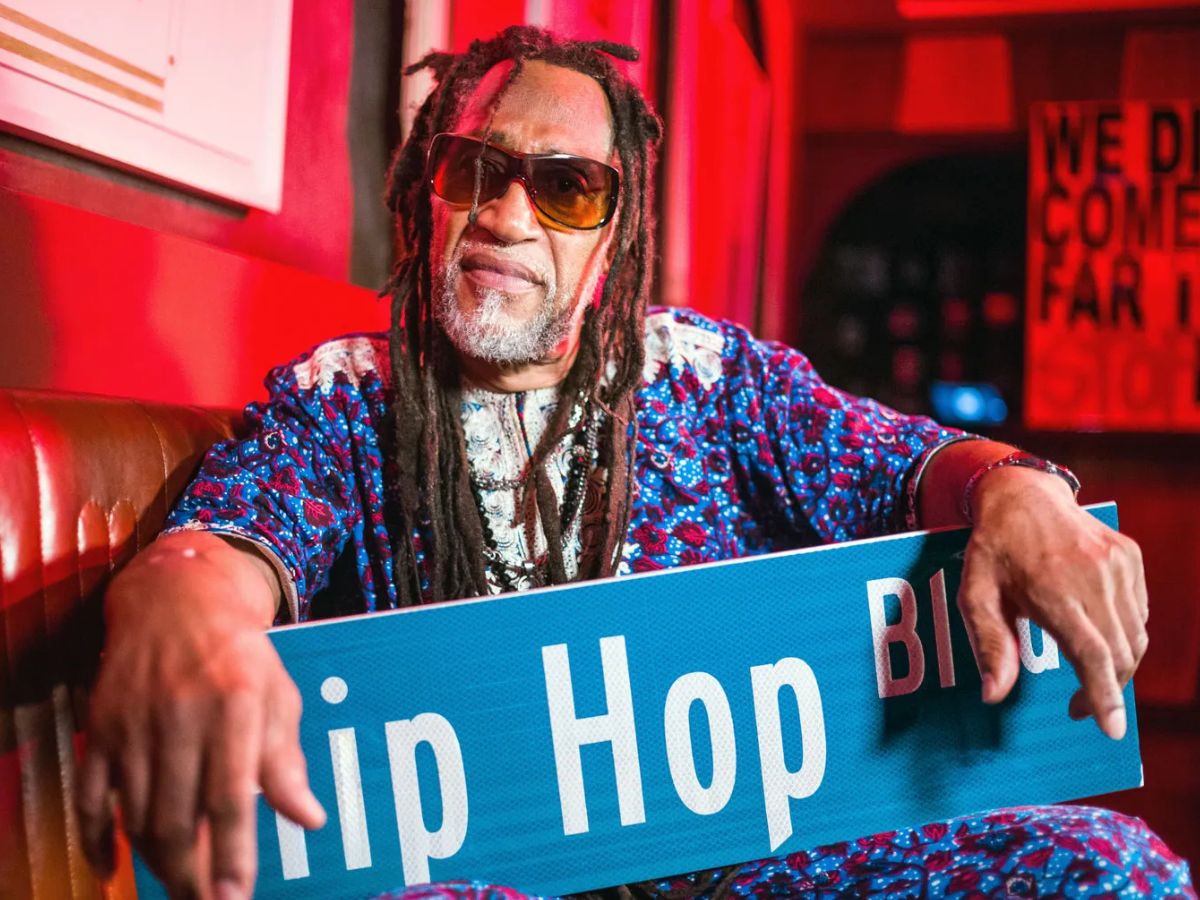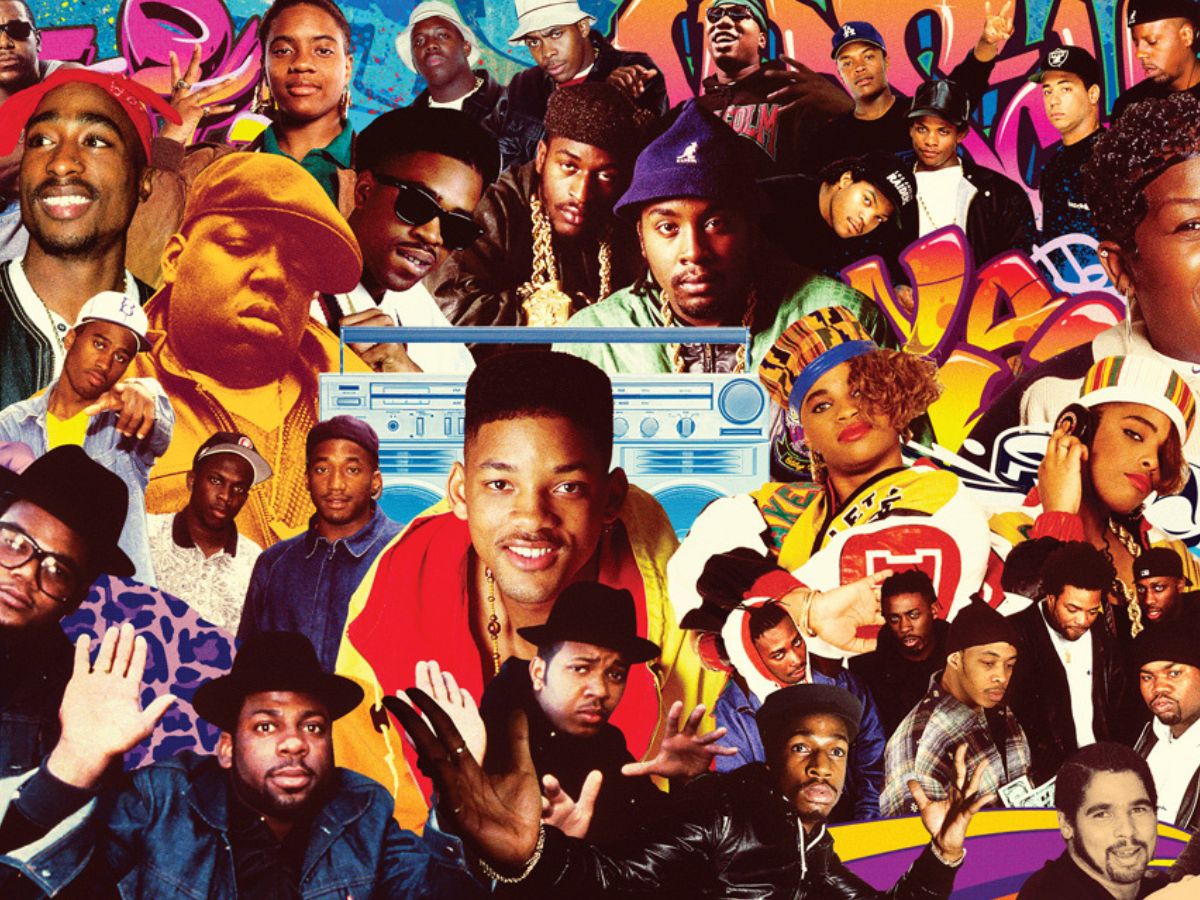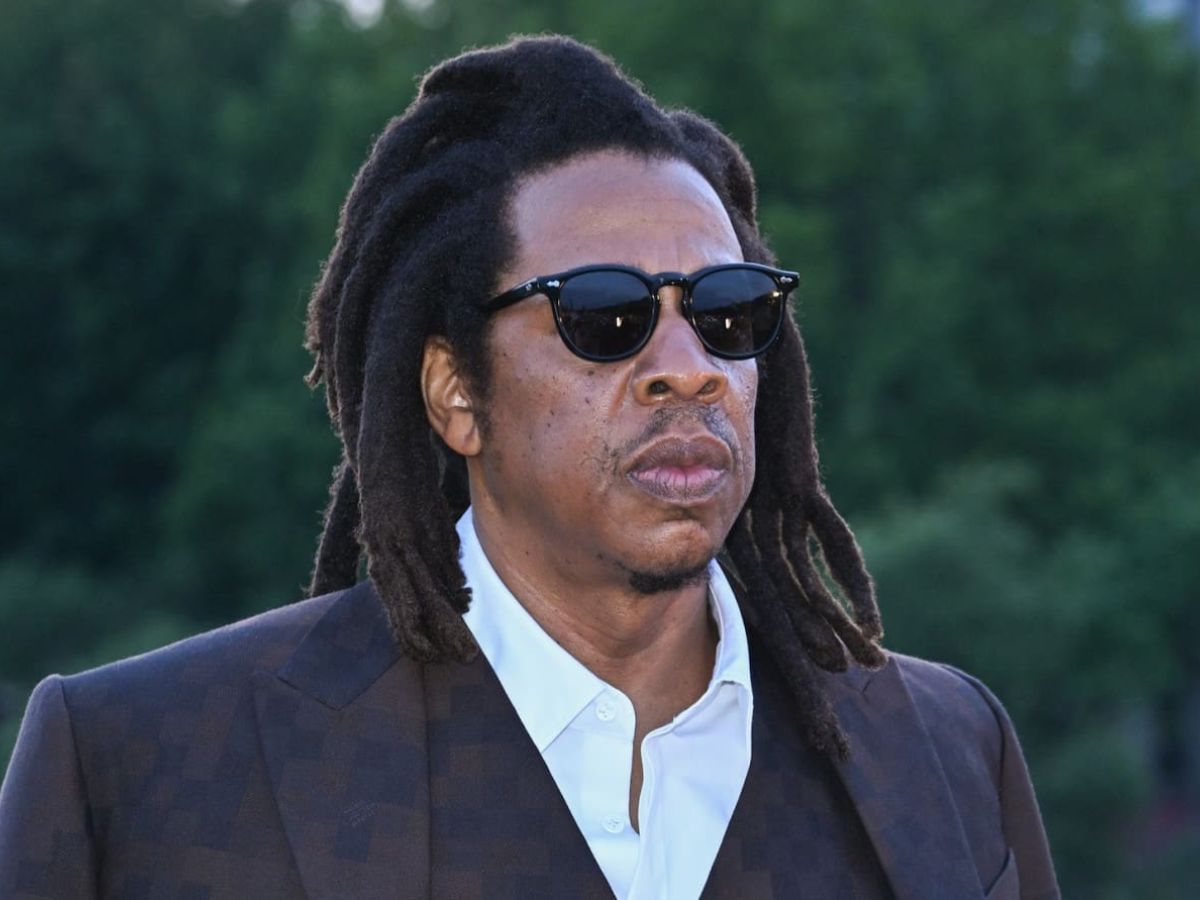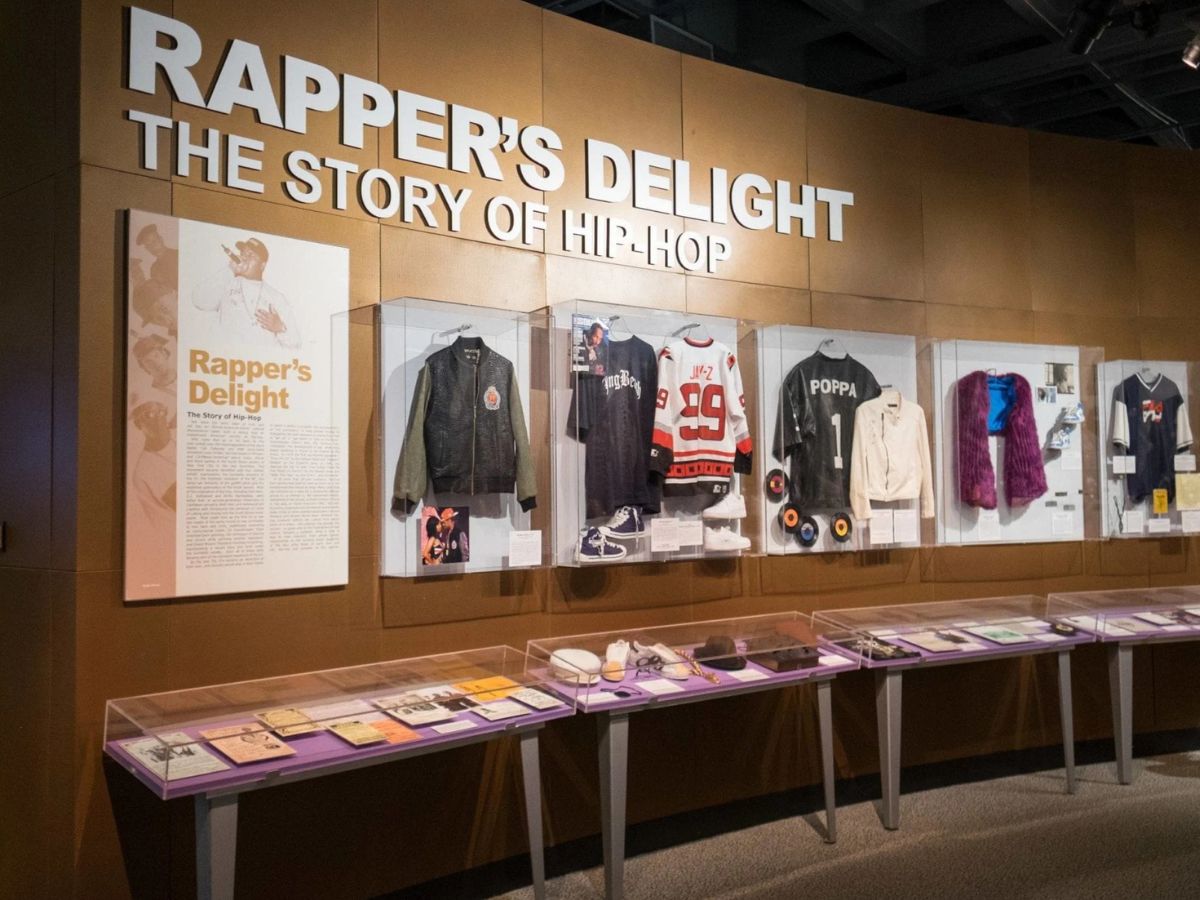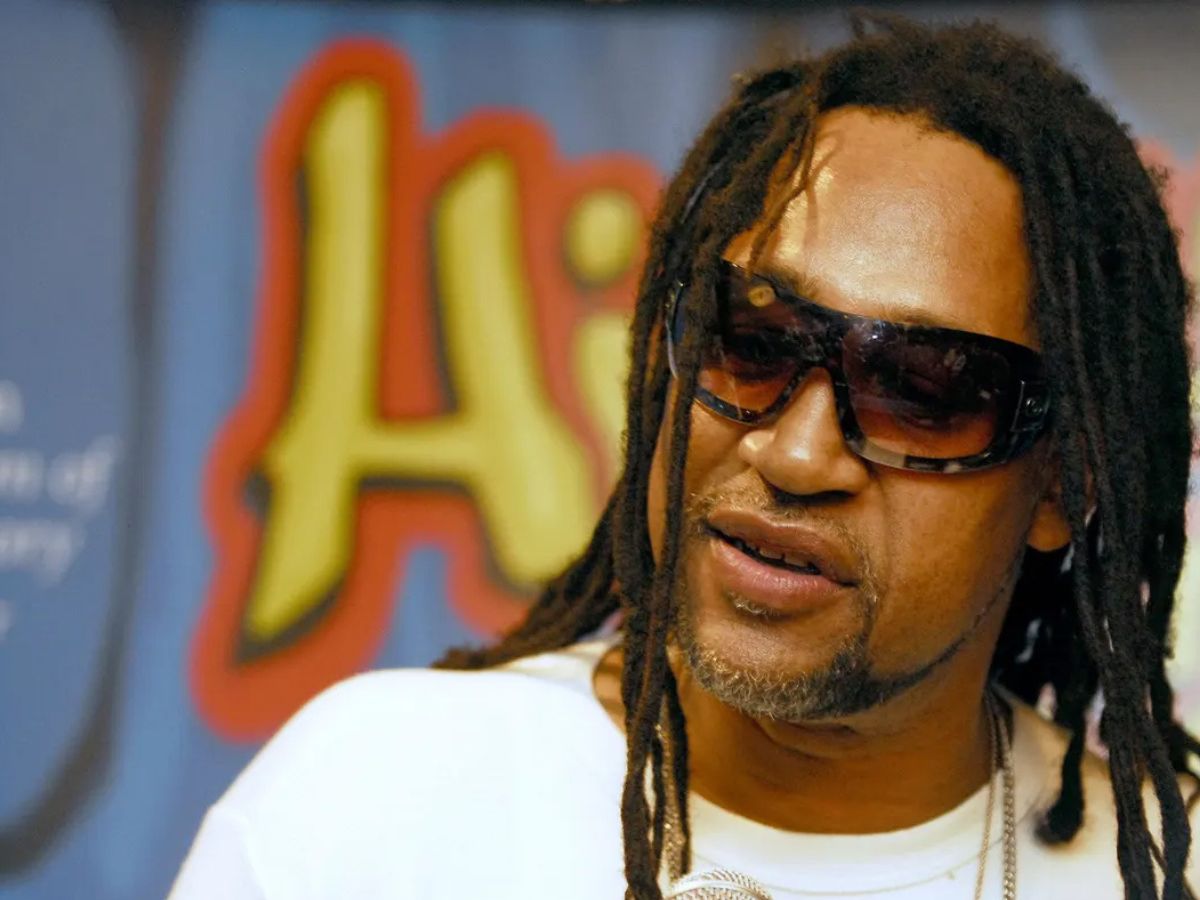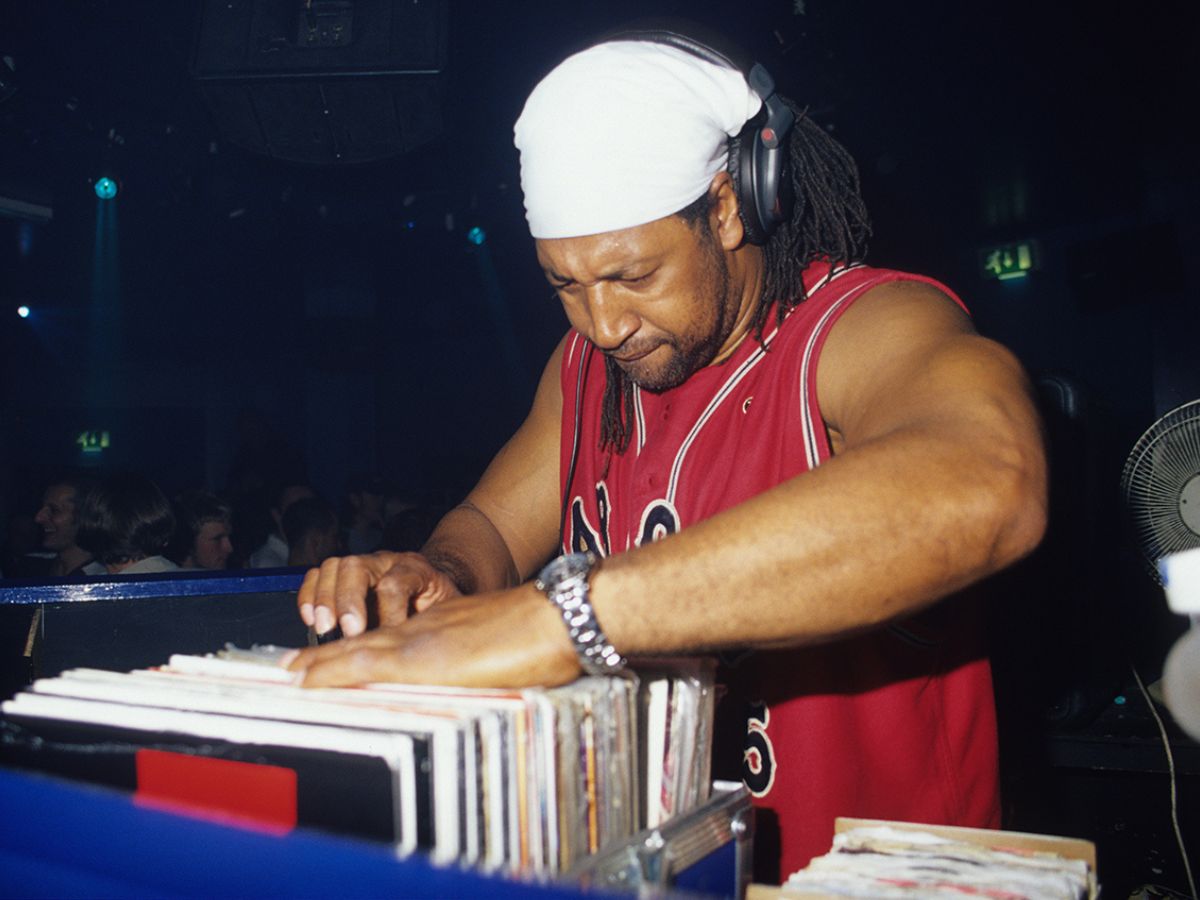

Hip Hop
Who Started Sampling In Hip Hop
Modified: January 25, 2024
Discover the pioneers of sampling in the world of Hip Hop and their impact on the genre's evolution. Learn about the fascinating history of sampling and its influence on modern music.
(Many of the links in this article redirect to a specific reviewed product. Your purchase of these products through affiliate links helps to generate commission for AudioLover.com, at no extra cost. Learn more)
Table of Contents
- Introduction
- Early Influences on Hip Hop
- The Origins of Sampling in Hip Hop
- Early Pioneers of Sampling
- The Impact of Sampling in Hip Hop
- Controversies and Legal Issues Surrounding Sampling
- Evolution of Sampling Techniques in Hip Hop
- Notable Artists and Songs that Popularized Sampling
- Sampling in Modern Hip Hop
- Conclusion
Introduction
Hip hop has undeniably become one of the most influential and popular music genres of our time. From its humble beginnings in the Bronx in the 1970s, hip hop has evolved into a global phenomenon, known for its unique beats, rhythmic rhymes, and catchy hooks. But what truly sets hip hop apart is its innovative use of sampling.
Sampling refers to the act of taking a portion, or sample, of one song and incorporating it into another. This technique allows hip hop artists to build upon the foundations of existing music, adding their own flavor and creativity to create something entirely new. Sampling has become a signature element of hip hop, giving rise to countless iconic tracks and shaping the sound of the genre.
However, while sampling has become an integral part of hip hop culture, its origins and development are rooted in a rich history of musical experimentation and technological advancements. Understanding the beginnings of sampling in hip hop is essential to fully appreciate and grasp its significance in the genre.
In this article, we will delve into the early influences that paved the way for the use of sampling in hip hop, explore the origins of sampling itself, examine the impact it has had on the genre, and discuss the controversies and legal issues that surround it. We will also take a closer look at the evolution of sampling techniques and highlight notable artists and songs that popularized this unique approach to music production.
Sampling has not only revolutionized hip hop, but it has also transcended genre boundaries and influenced a wide range of musical styles. Join us as we embark on a journey through the history of sampling in hip hop and discover the artists who have embraced this creative technique to shape the landscape of modern music.
Early Influences on Hip Hop
Hip hop, as we know it today, is a dynamic fusion of various musical influences and cultural elements. Before the advent of hip hop, there were several genres and movements that played a crucial role in shaping its sound and style.
One of the key influences on early hip hop was funk music, particularly the works of artists such as James Brown, Parliament-Funkadelic, and Sly and the Family Stone. Funk, with its infectious grooves and emphasis on rhythm and bass, provided the blueprint for the funky beats that would become synonymous with hip hop.
Another important influence was disco music, which emerged in the 1970s. Disco was characterized by its pulsating beats, catchy melodies, and dancefloor-friendly sound. It laid the foundation for the party-oriented and energetic nature of hip hop.
Additionally, the breakbeat culture played a significant role in the development of hip hop. Breakdancing, an integral element of early hip hop culture, borrowed heavily from the acrobatic moves of funk and soul dancers. The breakbeat, a percussive section of a song typically featuring a drum solo, provided the perfect backdrop for breakdancers to showcase their skills.
Last but not least, the art of DJing was a fundamental component of hip hop’s early days. DJs like Kool Herc, Grandmaster Flash, and Afrika Bambaataa were pioneers in manipulating vinyl records, creating innovative techniques such as beatmatching, scratching, and looping. These DJs would go on to become the backbone of hip hop’s musical production, laying the groundwork for the use of sampling in the genre.
It is crucial to recognize the historical context and diverse musical influences that paved the way for hip hop’s emergence. By drawing from the funk, disco, breakbeat, and DJing culture, early hip hop artists were able to cultivate a unique sound that would later evolve into the sampling techniques we know today.
The Origins of Sampling in Hip Hop
The origins of sampling in hip hop can be traced back to the early days of the genre, when DJs began experimenting with vinyl records to create new and innovative sounds. In the 1970s, DJs like Grandmaster Flash and Kool Herc would use two turntables to loop and extend drum breaks in funk and disco tracks, providing a continuous beat for breakdancing and MCing.
As hip hop continued to evolve, DJs realized that they could take this technique a step further by incorporating other elements of songs, such as vocals, basslines, and melodies. This marked the birth of sampling in hip hop.
The use of sampling in hip hop was not only a result of artistic creativity but also a necessity. During the early days of the genre, access to live instruments and studio resources was limited for many aspiring artists. Sampling provided a way to take existing recordings and manipulate them to create entirely new musical compositions.
With the rise of inexpensive samplers and drum machines in the 1980s, the art of sampling became even more accessible to hip hop artists. Samplers allowed for easy manipulation of recorded sounds, giving artists the ability to chop up samples, rearrange them, and add effects. This newfound flexibility opened up a world of creative possibilities for hip hop producers.
Sampling in hip hop was not limited to just music. Artists began to incorporate samples from a wide range of sources, including movies, television shows, speeches, and even video game sound effects. This added an extra layer of depth and personality to their compositions, allowing them to tell stories and convey messages in unique and engaging ways.
It is important to note that sampling in hip hop also brought attention to and revived interest in older, lesser-known songs and genres. By sampling obscure records and introducing them to new audiences, hip hop artists inadvertently contributed to the reemergence and popularity of forgotten musical treasures.
Overall, the origins of sampling in hip hop can be attributed to the innovative spirit of DJs who sought to push the boundaries of music creation. Their experimentation with vinyl records, combined with advancements in technology, paved the way for the sampling techniques that have become a hallmark of hip hop.
Early Pioneers of Sampling
As sampling began to take root in early hip hop, several pioneering artists emerged as key contributors to the development and popularization of this innovative technique. These visionaries pushed the boundaries of music production and paved the way for future generations of hip hop artists.
One of the most influential pioneers of sampling in hip hop is DJ Kool Herc. Known as the “father of hip hop,” Herc was instrumental in popularizing the technique of looping and extending drum breaks in songs. His innovative DJ sets and parties in the Bronx during the 1970s laid the foundation for the sampling culture that would later flourish in hip hop.
Another notable pioneer is Grandmaster Flash, whose technical prowess and knack for discovering and manipulating obscure records played a significant role in shaping the early sound of hip hop. Flash’s use of samples and his mastery of turntablism contributed to the rhythmic and sonic innovation of the genre.
Public Enemy, led by the influential duo of Chuck D and DJ Terminator X, also made significant contributions to the development of sampling in hip hop. Their groundbreaking album “It Takes a Nation of Millions to Hold Us Back” showcased their use of samples from a wide range of sources, including speeches, political interviews, and other music genres. Public Enemy’s sampling techniques effectively elevated the cultural and political significance of hip hop.
The Bomb Squad, the production team behind Public Enemy, deserves recognition for their groundbreaking sampling work as well. Their meticulous layering of samples and relentless attention to detail revolutionized the production quality and complexity of hip hop music.
Additionally, producers such as Marley Marl, Dr. Dre, and Pete Rock played a significant role in pushing the boundaries of sampling in hip hop. These producers were known for their ability to create cohesive and compelling compositions by sampling various elements from different genres, recontextualizing them to fit the hip hop aesthetic.
The early pioneers of sampling in hip hop laid the groundwork for the creative and technical possibilities of the genre. Through their experimentation and boundary-pushing, they established a new standard for musical production and inspired countless artists to explore the endless possibilities of sampling.
The Impact of Sampling in Hip Hop
The use of sampling has had a profound impact on the development and evolution of hip hop. It has not only influenced the sound and structure of the genre but has also become a powerful tool for artistic expression and cultural commentary.
Sampling allowed hip hop artists to create songs that were both familiar and innovative. By incorporating recognizable elements from popular songs or iconic sounds, artists were able to capture the attention of listeners and create a sense of nostalgia or familiarity. This strategic use of sampling helped draw in audiences and establish a connection between the past and present.
Sampling also brought attention to and celebrated the rich history of music, particularly in African American communities. By sampling soul, funk, jazz, and R&B records, hip hop artists paid homage to the pioneers of these genres, acknowledging their impact and influence on the development of music as a whole.
Furthermore, sampling provided opportunities for collaboration and cross-genre exploration. Hip hop artists began collaborating with musicians and producers from different backgrounds, bringing together diverse musical influences and creating unique, genre-blending compositions. This collaborative spirit not only expanded the sonic landscape of hip hop but also fostered mutual appreciation and understanding between artists from different musical traditions.
In terms of cultural commentary, sampling became a powerful tool for conveying messages and telling stories. Artists used samples to create juxtapositions and contrasts, blending differing elements to highlight societal issues or deliver powerful statements. This allowed for a deeper level of social and political commentary within the music, giving voice to marginalized communities and shedding light on important social issues.
Sampling also played a significant role in the globalization of hip hop. The incorporation of samples from various musical traditions allowed the genre to transcend borders and reach a global audience. Hip hop became a diverse and inclusive genre, embracing influences from around the world and allowing for the expression of diverse cultural identities.
However, it is important to acknowledge the controversies and legal issues surrounding sampling. The unauthorized use of samples raised concerns about copyright infringement and intellectual property rights. Legal battles and hefty fines have prompted artists and producers to adopt more cautious approaches when it comes to sampling, leading to the development of techniques such as interpolation and replaying of samples.
Nevertheless, the impact of sampling on hip hop cannot be denied. It has shaped the sound, style, and cultural significance of the genre, elevating it to a position of global influence and establishing it as a groundbreaking and innovative form of musical expression.
Controversies and Legal Issues Surrounding Sampling
While sampling has been instrumental in shaping the sound of hip hop, it has also been mired in controversy and legal challenges. The unauthorized use of samples has raised concerns about copyright infringement and intellectual property rights, leading to numerous legal battles and significant financial implications for artists and producers.
One of the main sources of contention is the issue of clearance. Getting clearance to sample a copyrighted song involves obtaining permission from the copyright holder, usually the original artist, songwriter, or record label. This can be a complex and time-consuming process, requiring negotiations and potentially substantial fees for the rights to use the sample.
However, clearance is not always obtained, and this has led to numerous lawsuits and legal disputes. Artists and producers who have used uncleared samples have faced lawsuits alleging copyright infringement, resulting in expensive settlements and damages. These legal battles have had a chilling effect on the sampling culture in hip hop and have forced artists to be more cautious and strategic in their use of samples.
Another legal issue surrounding sampling is the concept of “fair use.” Fair use is a legal doctrine that allows for the use of copyrighted material without permission, under certain circumstances, for purposes such as criticism, comment, news reporting, teaching, scholarship, or research. The application of fair use to sampling is a complex and often subjective matter, with courts evaluating factors such as the purpose and character of the use, the nature of the copyrighted work, the amount and substantiality of the portion used, and the effect on the market value of the original work.
Additionally, the rise of digital sampling and the availability of sampling software have raised new challenges. With the ability to copy, manipulate, and reproduce samples with ease, the line between transformative artistic expression and copyright infringement has become blurrier. This has led to questions about the limits of sampling and the rights of artists to freely sample and build upon existing musical works.
As a result of the legal challenges and controversies surrounding sampling, many artists and producers have turned to alternative techniques. Interpolation, which involves re-recording a portion of the original song, and replaying, which involves musicians recreating the sound of the original sample, have become more common in order to avoid legal issues. These techniques provide a way for artists to obtain the same desired sound and aesthetic while avoiding potential copyright infringement claims.
While the legal landscape surrounding sampling remains complex, the controversies and legal issues have had a lasting impact on the sampling culture in hip hop. Artists and producers continue to navigate the legal framework, seeking ways to incorporate samples while staying within the confines of copyright law and protecting their creative work.
Evolution of Sampling Techniques in Hip Hop
The evolution of sampling techniques in hip hop has been closely intertwined with advancements in technology and the changing landscape of music production. From the early days of vinyl manipulation to modern digital sampling, hip hop artists have continually pushed the boundaries of what is possible with samples.
In the early years of hip hop, sampling primarily involved looping and extending drum breaks from funk and disco records. DJs would manually manipulate vinyl records on turntables, using their hands to repeat and extend the desired sections. This hands-on approach laid the foundation for the rhythmic and percussive nature of hip hop beats.
As technology progressed, samplers and drum machines became more accessible and affordable. This led to the emergence of a new wave of producers who sought to push the boundaries of sampling. Artists such as J Dilla and Madlib embraced the use of samplers like the Akai MPC, allowing for more intricate and precise manipulation of samples.
Sampling techniques continued to evolve with the advent of digital audio workstations (DAWs). DAWs provided producers with greater control and flexibility in manipulating samples. The ability to chop, slice, rearrange, and manipulate samples within a digital environment opened up a world of creative possibilities.
With the rise of the internet and the accessibility of music streaming platforms, the range of samples available to hip hop artists expanded exponentially. Producers could now easily access and sample from a vast library of music, including rare, obscure, and international tracks. This broadened the sonic palette of hip hop and allowed for greater experimentation and cross-genre exploration.
Emerging sampling techniques include the use of granular synthesis, which involves breaking down a sample into tiny fragments and manipulating them individually to create unique and textural soundscapes. Additionally, artists have started exploring live sampling, using musical instruments or vocals to create samples on-the-fly during performances. These advancements in sampling technology have provided artists with new tools and creative avenues to explore.
Furthermore, the use of sampling has expanded beyond music. Artists have begun integrating samples from various forms of media, such as movies, television shows, and video games. This multidimensional approach to sampling allows for a deeper level of storytelling and cultural commentary within hip hop compositions.
It is important to note that while newer sampling techniques have emerged, classic sampling methods are still widely used and celebrated. The art of digging for vinyl records, seeking out rare and unique samples, and layering them to create intricate compositions remains a foundational aspect of hip hop production.
As technology continues to advance, so too will the evolution of sampling techniques in hip hop. Artists will continue to innovate and experiment, pushing the boundaries of what can be achieved with samples and creating new sonic landscapes that define the future of the genre.
Notable Artists and Songs that Popularized Sampling
Sampling has been instrumental in the creation of some of the most iconic and groundbreaking hip hop songs. Throughout the history of the genre, certain artists and songs have emerged as pioneers and trailblazers, showcasing the creative and innovative use of samples.
The Beastie Boys are often hailed as one of the early pioneers of sampling in hip hop. Their album “Paul’s Boutique,” released in 1989, showcased their masterful use of samples from diverse genres, seamlessly blending rock, funk, and soul into their own unique sound. Songs like “Shake Your Rump” and “Hey Ladies” demonstrated the group’s ability to create infectious grooves by layering samples with their own energetic performances.
Public Enemy’s landmark album “It Takes a Nation of Millions to Hold Us Back” is another prime example. Produced by the Bomb Squad, the album utilized an extensive array of samples, incorporating elements from funk, soul, rock, and speeches by civil rights leaders. Songs like “Fight the Power” and “Bring the Noise” showcased the group’s politically charged lyricism and innovative sampling techniques.
Jay-Z’s “The Blueprint” is regarded as a seminal album in the history of hip hop, known for its layered and intricate sample-based production. The song “Takeover” sampled The Doors’ “Five to One,” while “Heart of the City (Ain’t No Love)” sampled Bobby “Blue” Bland’s “Ain’t No Love in the Heart of the City.” These samples, along with others throughout the album, provided a nostalgic and energetic backdrop for Jay-Z’s lyrical prowess.
Kanye West is another artist who has made a significant impact on sampling in hip hop. His album “My Beautiful Dark Twisted Fantasy” showcased the diverse range of samples used, from soul classics like Curtis Mayfield’s “Move On Up” in “Touch the Sky” to electronic music pioneers Daft Punk’s “Harder, Better, Faster, Stronger” in “Stronger.” West’s use of samples helped redefine the sound of hip hop in the 2000s.
One cannot discuss notable sampling artists without mentioning DJ Premier. As a producer, DJ Premier’s signature sound is characterized by his creative and precise sampling, using snippets of jazz, funk, and soul records to create the foundation for classic hip hop tracks. His work with artists such as Gang Starr, Nas, and Notorious B.I.G. elevated the art of sampling and solidified his status as a legendary producer.
These are just a few examples of the artists and songs that have popularized sampling in hip hop. Their innovative use of samples has not only contributed to the success of their own music but has also left a lasting impact on the genre as a whole, inspiring countless artists to explore the creative possibilities of sampling.
Sampling in Modern Hip Hop
Sampling continues to be a fundamental element in modern hip hop, with artists pushing the boundaries and reimagining the possibilities of sample-based production. In recent years, advancements in technology and the availability of vast digital libraries have opened up new avenues for experimentation and creativity.
One notable trend in modern hip hop is the incorporation of samples from different cultures and musical traditions. Artists are increasingly looking beyond traditional hip hop influences, exploring genres such as world music, electronic music, and even classical compositions. This blending of sonic elements adds depth and richness to the music, creating a unique fusion of sounds and styles.
Moreover, artists are not just sampling the works of previous generations; they are sampling contemporary music as well. By incorporating samples from popular songs and recently released tracks, artists are able to tap into the collective musical consciousness of their listeners and create an instant connection. This approach resonates with current audiences who appreciate the combination of familiarity and innovation.
In addition, artists have begun embracing innovative sampling techniques that go beyond traditional looping and chopping. Some producers are experimenting with unconventional sampling methods, such as manipulating and warping samples to create abstract and atmospheric textures. This exploration of unique sampling techniques helps to create distinctive and avant-garde sounds in hip hop.
Furthermore, the rise of streaming platforms and social media has democratized the sampling process. Artists can easily discover and sample tracks from a wide range of sources, including underground artists, viral internet sensations, and even user-generated content. This expanded pool of samples allows for a greater level of diversity and freshness in modern hip hop music.
However, with the increasing popularity and commercial success of hip hop, the legal landscape surrounding sampling remains a challenge. Artists and producers must navigate the complexities of clearing samples or finding alternative methods to avoid copyright issues. This has led to the rise of techniques like interpolation, where artists recreate the sound of a sample instead of directly using the original recording.
Overall, sampling continues to be an essential aspect of modern hip hop. It allows artists to pay homage to their musical influences, add depth and texture to their compositions, and connect with audiences on a nostalgic and emotional level. As technology continues to evolve, we can expect sampling in hip hop to further evolve, creating new and innovative sonic landscapes for future generations of artists to explore.
Conclusion
Sampling has become an integral and defining element of hip hop, shaping the sound, style, and cultural significance of the genre. From its early influences in funk and disco to the innovation brought about by pioneering artists, sampling has played a pivotal role in the evolution of hip hop.
Sampling allowed hip hop artists to create something new and unique by building upon the foundations of existing music. It provided a means of paying homage to the past while creating fresh and innovative compositions.
Throughout the history of hip hop, notable artists and songs have emerged as pioneers of sampling, showcasing the creative and transformative potential of this technique. The Beastie Boys, Public Enemy, Jay-Z, Kanye West, and DJ Premier are just a few of the artists who have left an indelible mark on the genre through their innovative use of samples.
However, sampling has not been without its controversies and legal challenges. Copyright infringement and the need for sample clearance have forced artists to navigate a complex legal landscape, leading to the development of alternative sampling techniques and the careful consideration of fair use principles.
Despite these challenges, sampling remains a vital and thriving aspect of modern hip hop. Artists continue to push the boundaries and explore new horizons, incorporating samples from a diverse range of sources, experimenting with new sampling techniques, and embracing the global nature of music.
In conclusion, sampling has played an instrumental role in the creation and evolution of hip hop. It has enabled artists to create unique sonic landscapes, pay homage to musical influences, deliver cultural commentary, and connect with audiences on a deep and emotional level. As hip hop continues to evolve, we can expect sampling to remain a driving force, fostering creativity, innovation, and the continuous reimagining of what is possible within the genre.


